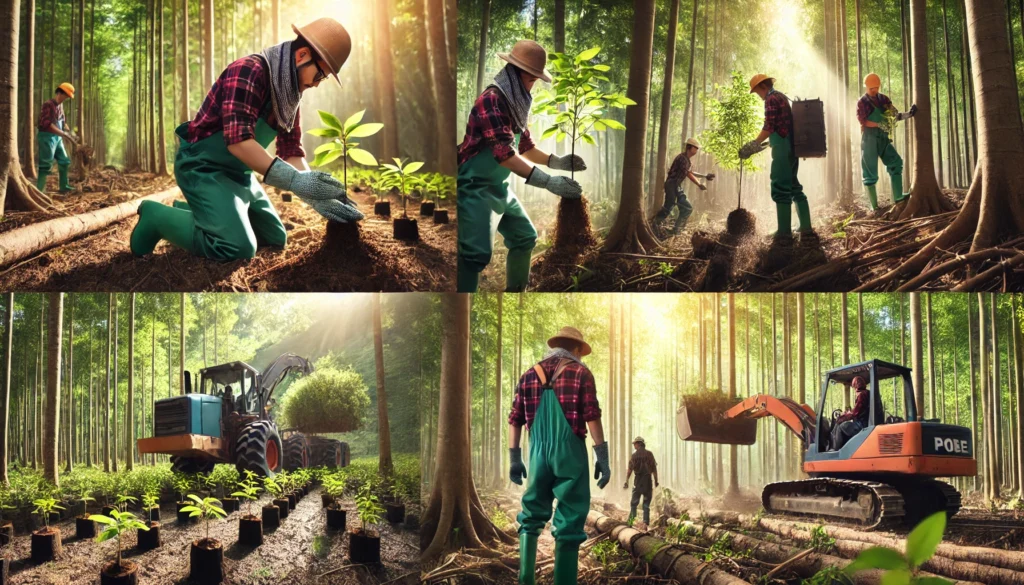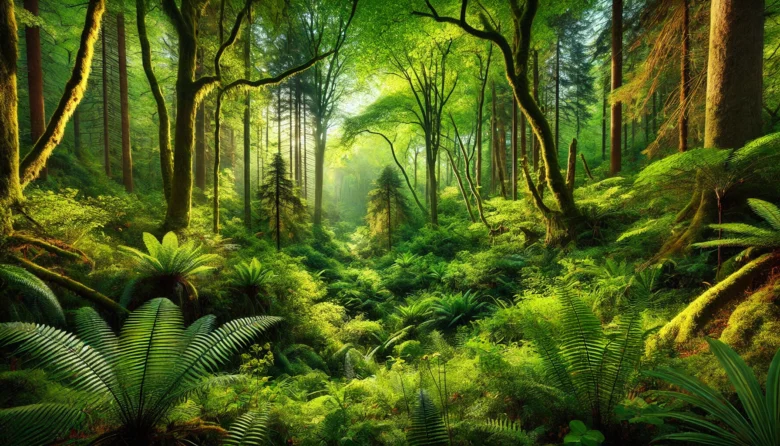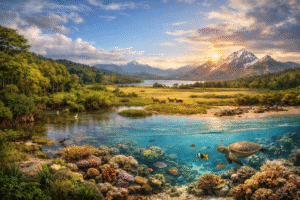Fun Fact: Forests cover about 31% of the world’s land area and absorb roughly 2.6 billion tons of carbon dioxide annually!
When we think about fighting climate change, renewable energy sources or electric cars might be the first things that come to mind. But there’s another powerful ally right under our noses (or, more accurately, beneath our feet): forests. This blog explores “The Role of Forest Conservation in Climate Change Mitigation” and the significant part forests play in absorbing and storing carbon, maintaining biodiversity, and stabilizing our climate.
Forests are nature’s answer to the climate crisis. They absorb a massive amount of carbon dioxide (CO₂), a primary greenhouse gas responsible for global warming. However, forests are increasingly under threat due to human activities like deforestation, agriculture, and urban expansion. Let’s dive into how forest conservation can help mitigate climate change, the benefits it brings, and how we can take action to protect our green allies.
The Carbon-Capturing Power of Forests
Forests are often called the “lungs of the planet,” but they’re more than just that—they’re carbon banks. Through photosynthesis, trees absorb CO₂ from the atmosphere and store it in their biomass (trunks, roots, leaves). This process removes CO₂ from the atmosphere, slowing the rate of global warming. One tree alone has the capacity to absorb up to 48 pounds of CO₂ annually. When we consider this impact on a scale of millions of trees, it becomes evident how crucial forests are in balancing carbon emissions produced by human activities.
For example, the Amazon rainforest, often called the “lungs of the Earth,” absorbs about 2 billion tons of CO₂ per year. However, due to rampant deforestation, these forests are at risk of becoming carbon sources instead of carbon sinks. When forests are cut or burned, the stored carbon is released back into the atmosphere, accelerating climate change. Protecting these carbon stores is vital for reducing our carbon footprint.

Biodiversity Boost and Ecosystem Stability
Forests are home to 80% of the world’s terrestrial animals, plants, and insects, making them vital for biodiversity. Conserving forests not only helps fight climate change but also preserves the intricate web of life within them. This biodiversity contributes to ecosystem stability, ensuring the resilience of these ecosystems in the face of natural disasters, pests, and disease outbreaks, which are becoming more frequent with climate change.
In India, the Sundarbans Mangrove Forest, which houses the endangered Bengal tiger, plays an important role in coastal protection. It absorbs CO₂ while preventing coastal erosion and mitigating the impact of cyclones, which are expected to increase in intensity with climate change. Mangrove forests, in particular, store up to 10 times more carbon per hectare than terrestrial forests, making them critical allies in climate mitigation.
The Economic and Social Benefits of Forest Conservation
Forest conservation doesn’t just have environmental benefits—it also offers economic and social advantages. Many communities around the world, especially Indigenous peoples, depend on forests for their livelihoods. Sustainable forest management can provide jobs and reduce poverty while also preserving forest health. Additionally, forests contribute to eco-tourism, which in turn helps fund conservation efforts and brings awareness to the importance of forest preservation.
Take Costa Rica, for example, a country known for its rich biodiversity and commitment to conservation. By investing in forest conservation and eco-tourism, Costa Rica has created sustainable income sources while also sequestering vast amounts of CO₂. The country’s Payment for Ecosystem Services (PES) program, where farmers are compensated for conserving forests on their lands, has successfully curbed deforestation and inspired similar programs worldwide.
Case Studies: Forest Conservation Success Stories
Brazil’s Amazon Rainforest Protection Programs
Despite setbacks in recent years, Brazil has made significant efforts in forest conservation. Through satellite monitoring, strict anti-deforestation laws, and Indigenous land protection, Brazil managed to reduce deforestation rates by over 80% from 2004 to 2012. Although these gains have been challenging to maintain, Brazil’s success during this period demonstrated how effective government intervention and policy enforcement can be in protecting forests.
India’s Green India Mission
India, a country with vast forest cover and biodiversity, launched the Green India Mission (GIM) as part of its National Action Plan on Climate Change. The mission aims to protect and restore forests, increase forest cover, and support sustainable livelihoods for communities that rely on forests. The GIM is expected to sequester millions of tons of CO₂ by restoring forest and non-forest lands, thereby contributing significantly to India’s climate targets.
How You Can Contribute to Forest Conservation
Protecting forests is a collective effort, but there are simple steps individuals can take to make a difference:
Support Eco-Friendly Products: Choose products that are certified by organizations like the Forest Stewardship Council (FSC), which ensures that products are sourced from responsibly managed forests.
Reduce Paper Usage: Digital alternatives to paper reduce the demand for tree-based products, which helps lessen deforestation pressures.
Advocate for Conservation Policies: Support policies aimed at protecting forest ecosystems. Many environmental organizations offer ways to get involved through petitions, letter-writing campaigns, and more.
Donate to Forest Conservation Projects: Organizations like the World Wildlife Fund (WWF) and Rainforest Alliance use donations to support reforestation projects, conservation efforts, and educational programs on sustainable forest use.
Conclusion
Forests are nature’s most powerful weapon in the fight against climate change. By conserving and restoring our forests, we can reduce CO₂ levels, support biodiversity, and enhance ecosystem resilience. Forest conservation isn’t just about planting trees; it’s about understanding the interconnectedness of all life and the importance of sustainable management.
If each of us takes small steps, from choosing sustainable products to supporting forest-friendly policies, we can collectively help preserve our forests and protect our planet for generations to come. Together, let’s ensure that our forests continue to thrive and serve as the green guardians of Earth.
Author’s Note
Thank you for reading! Forest conservation is a passion of mine, and I believe that raising awareness about it can make a tangible difference. Let’s work together to keep our forests healthy and our climate stable. Every action counts, no matter how small.
G.C., Ecosociosphere contributor.
References and Further Reading
- What Is Global Warming and Its Impact?. https://www.realestateagent.org/eco-friendly-and-sustainability/what-is-global-warming.html
- Forests are home to 80% of the world’s terrestrial biodiversity | UNREDD Programme. https://www.un-redd.org/multimedia/forests-are-home-80-worlds-terrestrial-biodiversity
- Why do you plant Mangrove trees instead of other trees?. https://help.ombraz.com/en-US/why-do-you-plant-mangrove-trees-instead-of-other-trees-294342
- Sustainable Tourism: Exploring Nature Responsibly – Power. https://www.egshpa.com/sustainable-tourism-exploring-nature-responsibly/




